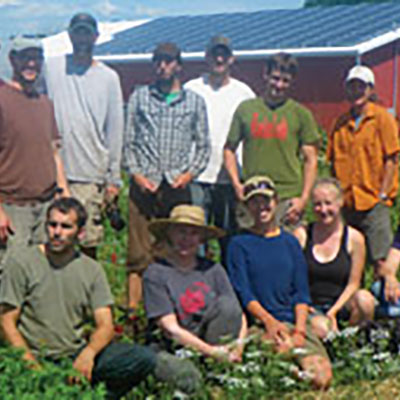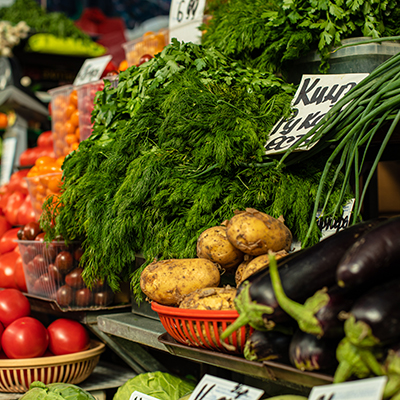By Diane Szukovathy
Now eight years old, the Seattle Wholesale Growers Market Cooperative (SWGMC) continues to adapt, endure and grow. As pioneers in the field, we receive frequent questions from growers around the country about how the co-op organizes and manages crop assignments. The short answer is – we’re a work in progress, making up our systems and honing them as we go.
There are no short cuts with this business model. As a farmer-owned wholesaler of local floral products, the co-op operates in an industry dominated by cheap imports, and in the city of Seattle, which has steep labor and lease costs. The average gross income for our member (owner) farms is roughly $100,000. We’d like to increase that number by at least 50% in the next three to five years – both to increase the amount of product flowing through the co-op and to offer sales opportunities in enough volume to allow our members to earn a middle class living by farming floral products.
SWGMC currently has 15 member farms with three additional farms in provisional membership status. In addition, the co-op staff work with non-member consignment growers and purchase product from larger US farms to fill in gaps as needed to satisfy the needs of our florist customers. All told, the co-op sold product from 55 different farms in 2018. When we bring in new members – which we need to do in order to grow the business to a sustainable size - we must ensure that we build upon, rather than erode, the sales opportunities of existing members.
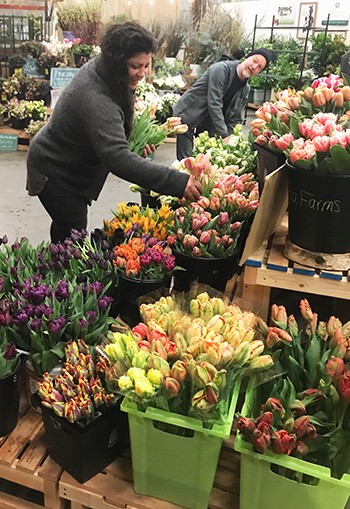
With over 500 uniquely different items, coordinating crops amongst the different farms is no small task. This is work which the co-op’s board of directors must oversee, while leaving the details of implementation to staff. It relies on solid, trusting relationships all around, and a steady flow of communication between staff and growers. The co-op must be fair, consistent and communicate reasonable expectations. Farmers must respect established systems, deliver on commitments and provide product that preserves the co-op’s quality brand.
In 2014, the co-op’s board and staff worked together to create the first draft of our Crop Coordination Policy. We started with a fairly loose, one-page document entrusting our staff with a few basic ideas - that members had priority over nonmembers for sales as long as they were able to dependably deliver quality product, and that members with a history of selling a particular crop should be given the opportunity to continue supplying that crop in the same or greater volume.
Each year we take advantage of the slower winter months to examine what did and did not work from the prior year. Slowly and steadily, as our volume of business has tripled, our original Crop Coordination Policy has become the nucleus of a more detailed plan which Molly Sadowsky, our Product Manager, describes as, “one of the cornerstones of the market.”

Now five pages with a crop list addendum, here are some of the highlights:
Market share
We use the prior two years sales history to establish a member’s baseline for allocating sales opportunities, which we call Market Share. The policy defines Market Share as, “a Member’s expected - although not guaranteed - share of sales opportunities for any given crop, measured monthly, by dollar volume.” We use two years of sales history to allow for the vagaries of weather and crop failure. We avoid a longer measure because the market supply chain is a living entity and needs to be fed to stay vital. Senior status only holds rank if a grower continuously supplies a given product.
Market Share opportunities are allocated to growers generally through crop planning (detailed below) and specifically on a weekly basis through assignment of purchase orders for presold product and by offering display space for open stock product on the market floor. All of these actions are controlled by staff.
Key crops
There are many advantages to having the co-op offer an abundant and diverse array of products. Our creative customers love the selection and growers get the opportunity to experiment and expand their crop lists. However, the co-op does not have staff resources to carefully monitor so many different items. For this reason, our policy now differentiates between Key Crops and Secondary Crops.
Key crops are our top 100 volume sales items and are listed by name in an addendum to the policy. Of those 100 Key crops, co-op staff are committed to actively tracking the 40 which are most likely to have overlapping supply from different growers. These are items such as dahlias, roses, lisianthus, strawflower, and eucalyptus foliage.
The co-op requires complete and timely communication from growers, and they must have approval from the Product Manager prior to bringing Key Crops. The market’s Sales Manager and Product Manager keep an eye on purchase order assignments and monitor flow on the market floor to prevent flooding and ensure that Market Share can be upheld. Secondary Crops are handled with the same principles, but with less monitoring by staff and more leeway given to growers for experimentation.

Crop planning
The co-op’s Product Manager leads mandatory, detailed planning sessions with each member twice yearly - in the fall for the following spring and summer crops – and again in the spring for the following fall and winter’s crops. These sessions examine the grower’s prior year’s sales history, discuss opportunities for growth and change, and culminate in crop commitments from each grower for the coming year. The co-op used to make crop planning sessions voluntary but found that staff were unable to properly serve customer needs without a reliable and committed supply of products from all growers.
Communication
We are still experimenting with the best ways to communicate supply between growers and staff. Currently we use a vast Google Docs spreadsheet with four tabs for each member farm. The first tab is called “Fresh Sheet” and is where each farm enters the products it will be supplying for the following week. Farmers fill out this tab on Wednesdays and staff members use this information to compile and email a master Fresh Sheet Availability List which florist customers receive on Fridays.
Each farm’s “Volume” tab is used to list availability of crops for the market’s Mass Merchandising Program and sales to high volume customers. These are pre-committed crops, with special attention paid in the crop planning stage. This tab requires reporting with a longer lead time of 10-20 days, allowing staff extra time to line up orders and explore opportunities for selling surplus crops.

The “Product Log” tab lists all of the crops supplied by each farm. It includes a notes column where growers give updates on crops. Staff request that growers update their product log weekly during high growing season and at least monthly at less active times of year. This is where a grower might indicate that a crop has been weather damaged, that something is coming on a different time schedule than originally planned or that a crop is finished for the year. Staff members use information from both the “Fresh Sheet” and “Product Log” tabs to allocate purchase orders, inform customers of product supply and keep the market floor well stocked.
And finally, the “Packing Slip” tab for each farm allows growers to list all items brought for open stock sales on the market floor. It is updated in real time, on day of delivery – giving staff an overview of all open stock product flowing into the market from member farms.
Our staff are working on ways to streamline the reporting system for growers, ideally so that reporting can occur on just one sheet. It is critical to our function that growers and staff can efficiently transfer enough information, at the right time, to the right people, so sales opportunities can be optimized.
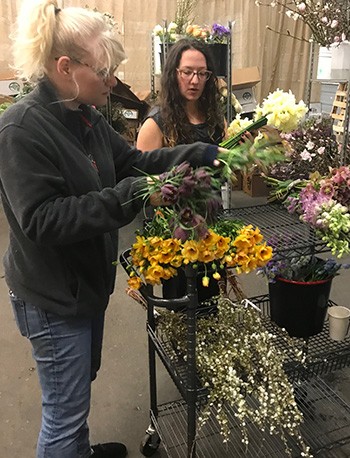
Making it all work
Our crop coordination efforts rely foremost on building and maintaining solid trusting relationships between staff and growers. Everyone has to do their part to make it work. Fortunately, we’ve got good people all around – solid and committed managers, capable and productive growers, and a board of directors which strives to provide oversight without micromanaging. To that end, we’ve deliberately written some room for interpretation into our policy so that our staff can provide excellent customer service and maintain the overall financial health of the business.
Last year we set up shop in a new space, had 14% revenue growth, and the majority of our staff were new and in training. We also brought five new growers into provisional membership status. All considered, things ran remarkably smoothly, but it’s no wonder we experienced some hiccups. These were mainly with communications gaps, growers delivering “surprise crops”, and staff not having enough resources to properly monitor the flow of product during our busiest months.
Each year we work to get better. For 2019, we’ve slowed the flow of new growers into the co-op so that we can properly take care of our existing members and provide them with ample opportunity to expand their offerings should they wish to do so. We’ve also delineated a series of steps to follow when people have questions or concerns regarding crop allocations and fair implementation of our policies.

We are still actively cultivating relationships with new growers, especially for next year and beyond. As growers enter the co-op, they gain market share through the following avenues:
- Increased demand - growth in the market’s customer base; development of new sales channels which drive increased sales of existing products
- Development of new product lines –bouquets, new crops for grocery, new crops for the market floor that are an immediate hit (for example butterfly ranunculus)
- Growers with Market Share either voluntarily decrease or eliminate a key crop
- Staff shift market share as a result of another grower’s consistent violation of the market’s established systems and requirements
Taking a step back, we’ve wrought a mighty - albeit still young - beast in creating this co-op. Crop coordination is just one piece of the puzzle, but a very important one. SWGMC is a producer’s co-op, owned by farmers. In order to endure, the co-op must be worth the investment that the growers have put in, providing long-term reliable and profitable sales channels for our products. We continue to evolve together, building community and working toward a shared goal of supporting sustainable, small scale flower farming in our region.
Diane Szukovathy co-owns and operates Jello Mold Farm with her husband, Dennis Westphall. Their seven-acre farm is located in Washington State’s Skagit Valley, where they grow a diverse range of floral cuts, focusing especially on woody, perennial and foliage crops.
Diane is a founding member of the Seattle Wholesale Growers Market Cooperative (SWGMC) and has served as board chair since the co-op’s beginning in 2011. She is known in the Pacific Northwest for her dedication to elevating the business of small-scale flower farming through numerous speaking and writing gigs, an on-farm internship program and shared marketing efforts through the co-op.

 For most established growers, the easiest place to start selling flowers will be mixed bouquets and single stem/small bunch retail sales. These are the flowers you can sell to your existing customers and they are easy to incorporate into farmers market, CSA, and grocery sales. But there are lots of other outlets out there, including florists, weddings and events, business subscriptions, value added products, and wholesalers.
For most established growers, the easiest place to start selling flowers will be mixed bouquets and single stem/small bunch retail sales. These are the flowers you can sell to your existing customers and they are easy to incorporate into farmers market, CSA, and grocery sales. But there are lots of other outlets out there, including florists, weddings and events, business subscriptions, value added products, and wholesalers.
 Weddings are a huge opportunity for local flower farmers, especially with the growing awareness of and demand for seasonal, sustainable flowers. And, if there is one time that people really want special flowers, it’s at their weddings.
Weddings are a huge opportunity for local flower farmers, especially with the growing awareness of and demand for seasonal, sustainable flowers. And, if there is one time that people really want special flowers, it’s at their weddings.
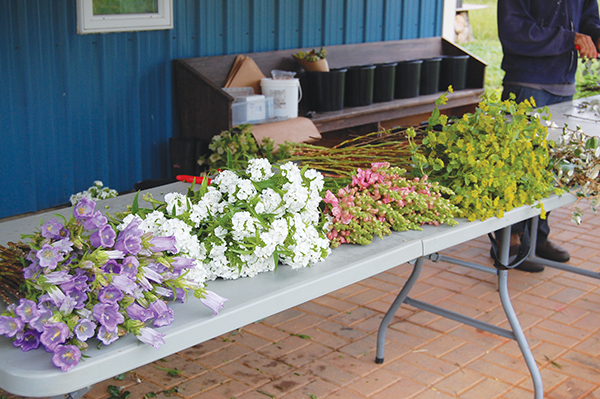 Why is the flower micro-farm best suited to a laser focus on one or two enterprises versus a balance of several? It is because of the long maturity of flower crops and the specific and conflicting demands of different types of flower enterprises. For example, some of the most common ways for farms to sell their flowers are at a farmers market, wholesale, from a flower stand/truck, a CSA, and weddings/events. These outlets can be compared on their need for similar types and quantities of flowers.
Why is the flower micro-farm best suited to a laser focus on one or two enterprises versus a balance of several? It is because of the long maturity of flower crops and the specific and conflicting demands of different types of flower enterprises. For example, some of the most common ways for farms to sell their flowers are at a farmers market, wholesale, from a flower stand/truck, a CSA, and weddings/events. These outlets can be compared on their need for similar types and quantities of flowers.
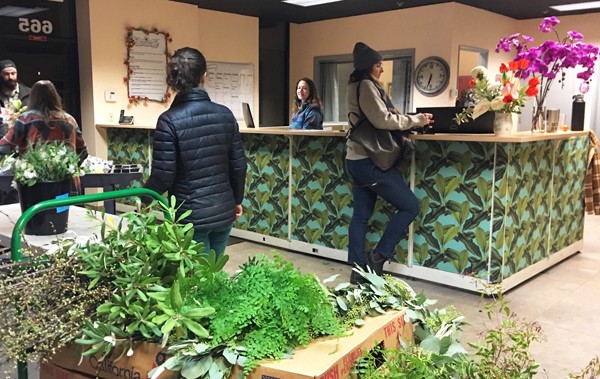 It takes courage to farm, no way around it and no matter what you farm. If you are trying to pull a living from working the land, you learn to live with risk on a daily basis, in a way that earning a regular paycheck won’t teach.
It takes courage to farm, no way around it and no matter what you farm. If you are trying to pull a living from working the land, you learn to live with risk on a daily basis, in a way that earning a regular paycheck won’t teach.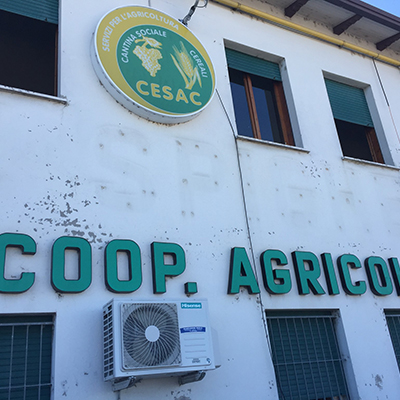
 With word that Amazon has purchased Whole Foods, farmers can be sure that the downward pressure on prices will continue. Farmers in many regions report declining CSA memberships and farmers market sales. Producers will have to think hard about the sustainability of their operations with regard to marketing and pricing amidst changing consumer expectations.
With word that Amazon has purchased Whole Foods, farmers can be sure that the downward pressure on prices will continue. Farmers in many regions report declining CSA memberships and farmers market sales. Producers will have to think hard about the sustainability of their operations with regard to marketing and pricing amidst changing consumer expectations.
